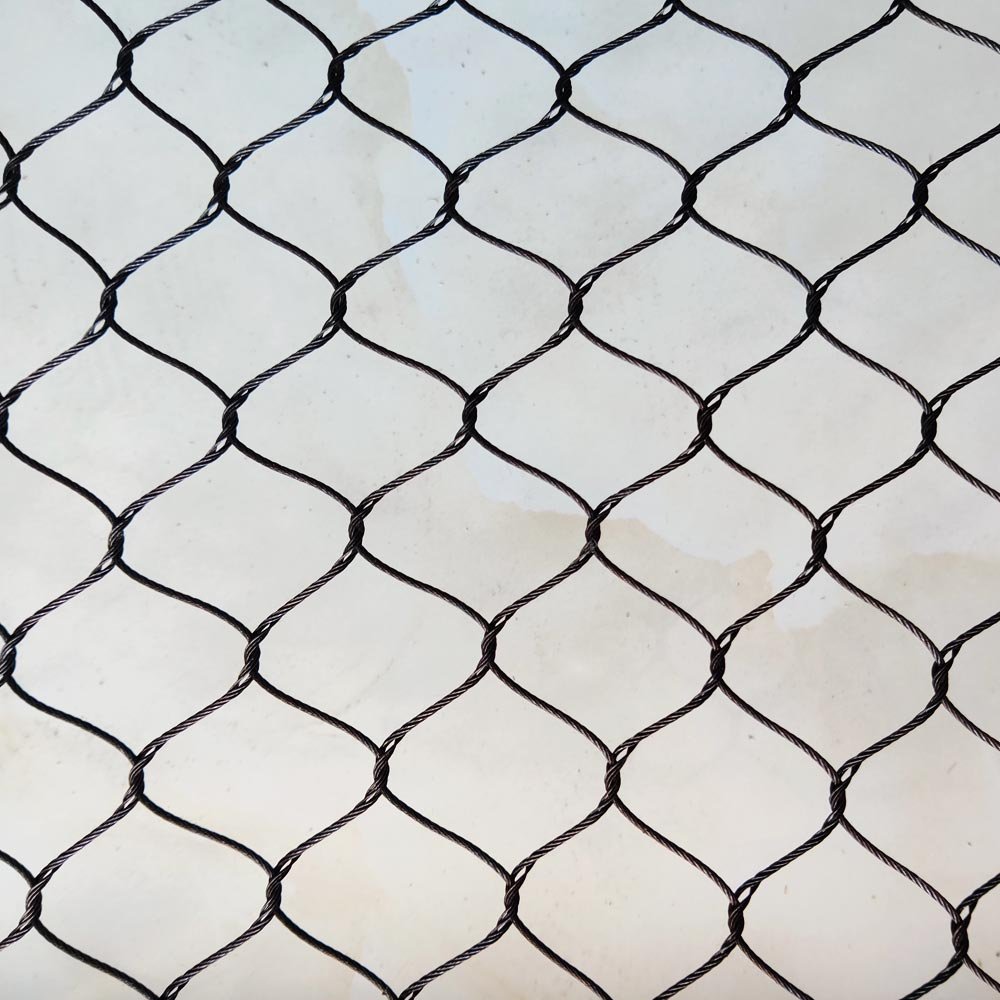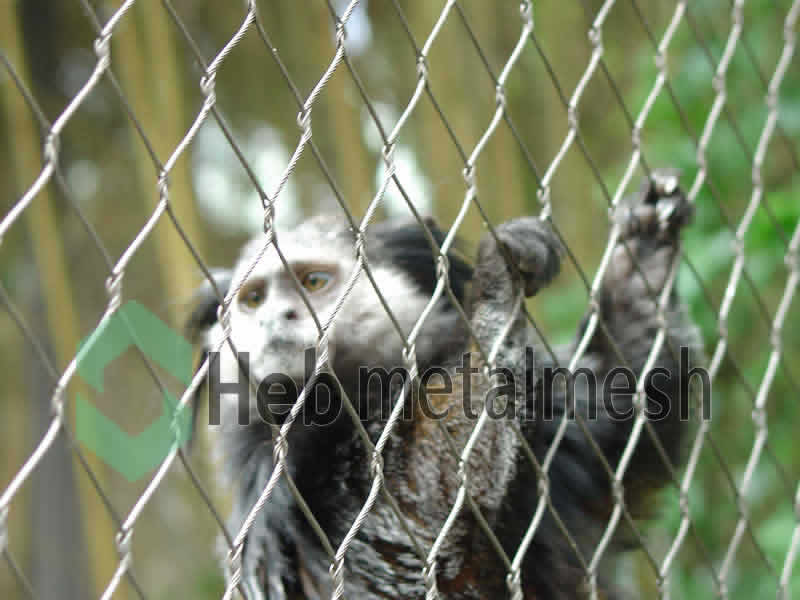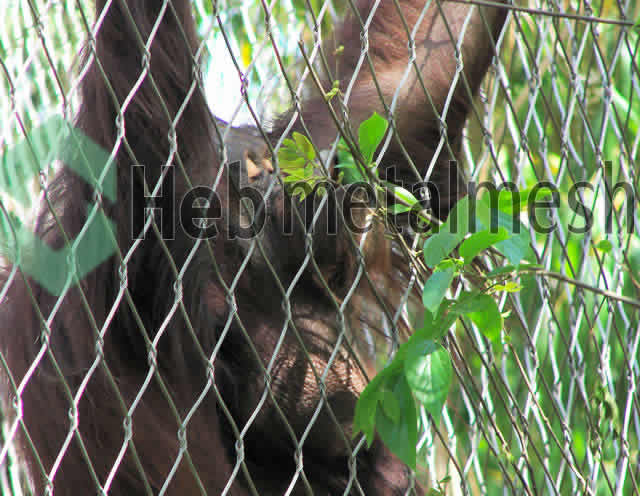Introduction to Small Animal Enclosures
Small animal enclosures are essential for the well-being of various species, including rodents, reptiles, birds, and other small mammals. Properly designed enclosures serve to safeguard these animals from potential hazards while simultaneously creating an environment that caters to their specific needs. The significance of small animal enclosures becomes evident when considering the factors of animal welfare, safety, and habitat management. Adequate enclosures prevent escape and protect against predators, ensuring that the animals remain secure in their habitats.
There are several types of small animal enclosures, each tailored for different species and settings. In zoos, specialized habitats are constructed to mimic the animals’ natural environments, providing enrichment through appropriate spatial arrangements, shelters, and climbing structures. Sanctuaries often employ enclosures that prioritize rehabilitation and recovery for small animals rescued from adverse situations, ensuring a peaceful and secure atmosphere for their recuperation. Meanwhile, home environments may utilize smaller, more convenient enclosures designed for pet owners who wish to provide safe and engaging spaces for their pets to thrive.
An important aspect of creating effective small animal enclosures is selecting the right materials. The materials used should ensure safety for the inhabitants while maintaining durability, ease of maintenance, and resistance to wear from environmental factors. Stainless steel netting, for instance, is becoming increasingly popular due to its strength and longevity, making it an ideal choice for various types of enclosures. By choosing appropriate materials, caretakers can significantly improve the quality and sustainability of small animal habitats.
In conclusion, the significance of small animal enclosures cannot be overstated, as they play a crucial role in promoting animal welfare and safety across different settings. When constructed thoughtfully, these enclosures not only protect the animals but also enhance their overall quality of life, facilitating their natural behaviors and needs.
Understanding Hebmetalmesh and Its Products
Hebmetalmesh stands out as a prominent manufacturer specializing in innovative zoo enclosure solutions, particularly in the realm of small animal enclosures. Established with the mission to provide effective and safe habitats for a diverse range of animal species, the company has evolved significantly since its inception. With a keen focus on using advanced materials and technologies, Hebmetalmesh has carved a niche in the market for providing flexible stainless steel zoo enclosure netting that meets both aesthetic and functional requirements.
The company’s commitment to quality is reflected in its extensive product line, which features a variety of options tailored to the specific needs of animal caretakers and zoos. Among these offerings, Hebmetalmesh’s flexible stainless steel netting holds a distinct position, designed to withstand various environmental factors while ensuring the safety of the animals within. Notable for its durability, this netting can endure harsh weather conditions and resist wear over time, making it an ideal choice for small animal enclosures.
Moreover, the flexibility of their stainless steel netting allows for creative designs in habitat construction, enabling facilities to create enclosures that are not only secure but also visually appealing. The corrosion resistance of the materials used enhances the longevity and appearance of these enclosures, mitigating the need for frequent replacements or maintenance. This feature is particularly beneficial for outdoor installations, where exposure to the elements can lead to accelerated degradation in standard materials.
In summary, Hebmetalmesh’s dedication to quality, durability, and flexibility resonates throughout its product offerings, making it a trusted name in the manufacturing of small animal enclosures. By continually innovating and adapting to the changing needs of the industry, Hebmetalmesh ensures that their solutions remain at the forefront of animal habitat design.
The Science Behind Stainless Steel Enclosure Netting
Stainless steel has become a preferred material for small animal enclosures due to its remarkable physical properties and resilience. One of the key characteristics of stainless steel is its exceptional tensile strength. This measure of how much pulling force the material can withstand without breaking makes it an ideal choice for enclosures that require both durability and reliability. This strength ensures that the structure can safely contain small animals without the risk of deformation or failure, which can occur with weaker materials.
Another significant advantage of stainless steel in small animal habitats is its ease of maintenance. Unlike traditional materials that may require frequent replacement or repair, stainless steel can be easily cleaned and sanitized. This property not only enhances the longevity of the small animal enclosure but also promotes better hygiene for the animals residing within, reducing the risk of disease transmission. The non-porous surface of stainless steel limits the growth of bacteria and other pathogens, ensuring a healthier environment for small pets.
Resistance to rust and corrosion is another critical factor that contributes to the advantages of stainless steel enclosure netting. Small animal habitats are often exposed to various weather conditions, and materials that corrode can compromise the structure’s integrity. Stainless steel, on the other hand, remains unaffected by moisture and environmental elements, making it a reliable countermeasure against deterioration over time. This resistance extends the lifespan of the enclosure, allowing it to withstand the rigors of both indoor and outdoor use.
These scientific attributes of stainless steel collectively enhance the safety and functionality of small animal enclosures. By combining strength, low-maintenance requirements, and resistance to corrosion, stainless steel netting provides an optimal solution for those seeking to create safe, durable, and hygienic habitats for small animals.
Customization of Zoo Enclosure Netting Panels and Rolls
Customization is a crucial aspect of designing effective small animal enclosures, as it allows for tailored solutions that cater to the diverse needs of various species. Hebmetalmesh provides a variety of options for customers looking to create bespoke stainless steel netting panels and rolls, ensuring that every enclosure is optimized for both safety and functionality.
One of the primary customization options available is the selection of dimensions for the enclosure netting. Customers can specify the height, width, and overall area of each panel, enabling them to construct small animal habitats that fit seamlessly into their designated spaces. This flexibility is especially important for facilities that may have unexpected layout constraints or specific architectural requirements.
Another critical consideration is the mesh size. Depending on the animal species and their specific behaviors, the mesh size can be adjusted to provide adequate containment while allowing sufficient airflow and visibility. When designing enclosures for smaller animals, tighter mesh sizes ensure that they cannot escape while still permitting light and preventing stress from overly confined spaces. Conversely, for larger species, wider mesh sizes may enhance visibility and interaction with visitors without compromising safety.
Additionally, customers can choose from a variety of finishes to enhance both aesthetics and durability. Whether opting for a galvanized finish to prevent rust or a powder-coated surface for color customization, these finishing touches can significantly impact the operating life of the enclosure. Environmental conditions also play a vital role in the selection of materials and finishes, as certain treatments may offer better protection against specific weather conditions.
Through a combination of adjustable dimensions, varied mesh sizes, and suitable finishes, Hebmetalmesh’s customization options allow customers to create effective small animal enclosures that meet the specific needs of their inhabitants. By carefully considering these factors, it is possible to design enclosures that are not only secure but also enriching for the animals they house.
Installation Process for Small Animal Enclosures
Installing stainless steel zoo enclosure netting for small animal habitats is a manageable yet essential task that requires careful preparation and execution. The first step in the installation process involves gathering the necessary tools, which include a measuring tape, cutting tools, a level, brackets, screws, and safety equipment such as gloves and goggles. Ensuring that you have all items prepared in advance will streamline the installation process and help maintain safety.
Next, site preparation is crucial for creating a secure small animal enclosure. Begin by assessing the space where the enclosure will be set up, ensuring that the ground is level and free from any debris. Mark the enclosure’s perimeter using stakes or chalk lines, which will serve as guides throughout the installation. If the ground is uneven, consider leveling it, as this will contribute to the overall stability of the enclosure.
After preparing the site, the next phase is to install the framework that will support the netting. This typically involves setting up posts or panels at each corner and along the sides of the enclosure. Once the framework is in place and properly secured, you can proceed to attach the stainless steel netting. Begin from one corner and unroll the netting to cover each side of the framework, making sure it is taut and evenly distributed to prevent sagging.
Securing the netting is critical for maintaining a safe habitat. Use brackets and screws to fasten the netting to the support framework. It is advisable to reinforce corners and any potential weak points to prevent escape. When the netting is installed, conduct a thorough inspection to identify any gaps or loose areas that may need additional fastening. By following these steps diligently, you can ensure that the small animal enclosure is both functional and provides a safe environment for the animals.
Maintenance and Care for Stainless Steel Enclosures
Proper maintenance of stainless steel enclosures is essential to ensure the longevity and safety of small animal habitats. Regular cleaning plays a vital role in preventing the build-up of dirt, debris, and harmful bacteria that can compromise the well-being of the occupants. To maintain a high-quality small animal enclosure, it is advisable to implement a routine cleaning schedule. Ideally, enclosures should be cleaned at least once a week. This process includes the removal of any waste material, uneaten food, and other contaminants. A mild soap solution is recommended for surface cleaning, with a soft brush or cloth used to scrub away any stubborn spots. Rinsing thoroughly with clean water ensures that no soap residue remains, which could pose a risk to the animals.
In addition to regular cleaning, inspections should be conducted on a routine basis—preferably bi-weekly. During these inspections, check for signs of wear and tear, such as rust spots or loose fittings, which could compromise the structural integrity of the small animal enclosure. Any identified issues should be addressed immediately to prevent further deterioration. If rust spots are found, a special stainless steel cleaner can be used to restore the surface, effectively mitigating long-term corrosion.
Moreover, it is beneficial to apply protective coatings periodically to further enhance the enclosure’s durability against environmental factors. When assessing the condition of the enclosure, pay close attention to hinges and locks, ensuring they operate smoothly without corrosion. By taking these preventive measures, the stainless steel enclosures will remain safe and secure, providing a healthy habitat for small animals for years to come. The combination of a consistent cleaning routine and regular inspection will significantly prolong the lifespan of the small animal enclosure, contributing to the well-being of its inhabitants.
Testimonials and Case Studies
Customers across various sectors have experienced considerable success using Hebmetalmesh’s stainless steel zoo enclosure netting in their small animal habitats. One notable case comes from a local animal sanctuary that sought to enhance the protective measures around their rescued small mammals. Prior to installing our netting, they faced issues with predators infiltrating the enclosure. After switching to our stainless steel solutions, the sanctuary reported a dramatic decrease in incidents, stating that the netting not only provided a robust barrier but also maintained a natural view for visitors.
A zoo in the metropolitan area also shared its positive experience. When upgrading their small animal enclosures, they opted for our stainless steel netting because of its durability and ease of maintenance. The zoo’s director noted that the aesthetic appeal combined with the function delivered by our enclosures allowed for a more immersive visitor experience while keeping the animals safe. This blend of form and function was essential in their decision-making process.
In another instance, a private breeding facility for exotic small animals highlighted the versatility of the netting. They required an enclosure system that could adapt to various species, some of which had high energy levels and needed ample space to roam. The facility manager praised the flexibility of our stainless steel enclosure solutions, stating that the customizability allowed them to create an environment tailored to the unique needs of each species. This adaptability is a critical factor contributing to the overall success in breeding and facilitating healthy, thriving animal populations.
These testimonials and case studies underline the effectiveness of using stainless steel netting in small animal enclosures. It demonstrates how practical applications in various settings can lead to improved safety, enhanced visitor experience, and greater animal welfare.
The Importance of Compliance with Animal Welfare Standards
Adhering to animal welfare standards is crucial when designing and constructing small animal enclosures. These regulations are established to ensure that animals are provided with habitats that meet their physical and psychological needs. Compliance with these standards not only safeguards animal welfare but also reflects the values of the organizations responsible for their care. Various legislative frameworks, such as the Animal Welfare Act, outline specific requirements for the housing, care, and welfare of animals in captivity.
When developing small animal enclosures, it is essential to consider best practices endorsed by animal welfare organizations. This includes providing ample space for movement, access to fresh air and natural light, as well as environmental enrichment. Enclosures must be designed to accommodate the natural behaviors of the animals housed within, ensuring that they can exhibit species-specific traits such as climbing, burrowing, or socializing. Failure to comply with these standards can result in negative consequences, ranging from poor animal health to legal repercussions.
Hebmetalmesh stands out in providing solutions that help organizations meet these regulations. By offering durable stainless steel zoo enclosure netting, they ensure the safety and security of small animals while also fostering an environment that promotes their well-being. The materials used in Hebmetalmesh products are both robust and adaptable, allowing for compliance with varying animal welfare standards across different jurisdictions. Furthermore, their commitment to continuous improvement and innovation in design empowers organizations to create small animal enclosures that adhere to the highest standards of welfare. By prioritizing compliance, animal care facilities can reassure stakeholders that they are not only fulfilling legal obligations but are also committed to the ethical treatment of the animals in their care.
Conclusion and Future Directions in Enclosure Design
In conclusion, the importance of investing in high-quality small animal enclosures cannot be overstated. Throughout this blog post, we have explored various aspects of enclosure design, emphasizing the necessity of durable and safe materials, such as stainless steel zoo enclosure netting. Such materials not only enhance the safety and well-being of small animals but also contribute to ease of maintenance and longevity of the habitats.
The significant role that well-designed enclosures play in the health and happiness of small animals has been reinforced by current trends emphasizing sustainability and innovation. Future directions in enclosure design are likely to prioritize eco-friendly materials and practices that align with a growing awareness of environmental responsibility. The pursuit of lightweight, yet secure, enclosure solutions is also expected to gain traction, allowing for adaptable habitats that can fit diverse environments and animal needs.
As the market continues to evolve, it is essential for caretakers and enthusiasts to stay informed about the advancements in enclosure technology. Companies like Hebmetalmesh are leading the way by providing versatile and customizable options that can cater to various small animal species. These enclosures are designed not just to keep animals confined but to provide enriching environments that mimic their natural habitats.
Hence, as we look towards the future, we encourage readers to consider the significance of their choices in small animal enclosures. Investing in high-quality products will not only ensure the well-being of the animals but will also enhance the overall experience of caring for them. It is clear that the future of enclosure design will require a blend of innovation, sustainability, and a commitment to animal welfare, making it an exciting time for pet owners and professionals alike.


